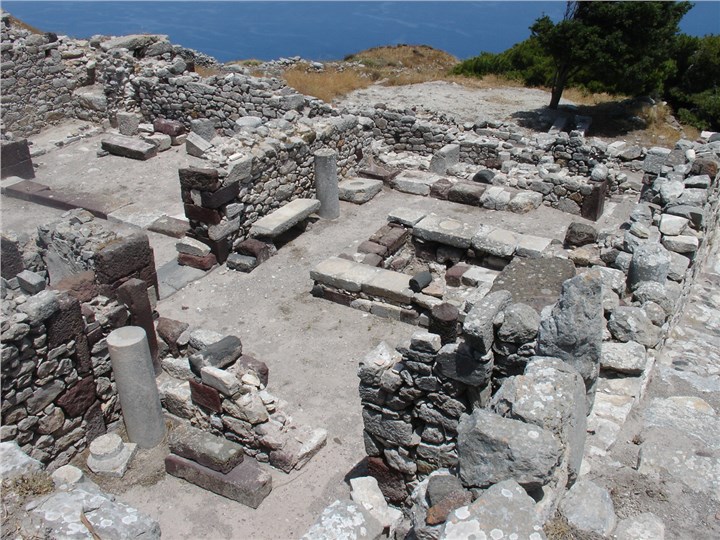
Ancient Thera, Santorini
Thera, a renowned ancient civilization that stands in for the second most significant historical epoch in Santorini’s history, is involved. Ancient Thera is situated on the summit of Mesa Vouno Mountain, which divides the seaside communities of Perissa and Kamari and is located east of Prophet Elias Mountain. It is approximately 365 meters high, making it a great vantage point for the southeast Aegean Sea, and its steep slopes provide fortification naturally. The Lacedaemonian colonists chose this strategic location to set up their town. The island was given the name Thera in honor of their ruler Theras when they first settled there in the eighth century BC.The only naturally occurring springs on the entire island were also present here, along with a number of building supplies. The Ptolemaic monarchy later valued this fortified area, and in the fourth century BC it served as Egypt’s naval and military base.
A hamlet from the Hellenistic Period was discovered during the excavations in Mesa Vouno Mountain, which were begun in 1896 by a German baron and finished in 1961 by Greek archaeologists. A large paved road, numerous smaller walkways, and a drainage system were all there. The private structures were composed of small, asymmetrical stones, whereas the public ones were made of limestone. The discovery of two graves, a theater, markets, paganic temples, Christian churches, baths, and other public structures suggests a sophisticated civilization where religion played a significant role. Thera served as the island’s commercial and religious hub.
Due to the Spartans’ conservatism and lack of support for the advancement of the arts and education, there was little significant cultivation of art. However, the archaeological digs turned up some amazing ceramic and plastic arts items. Although it was a reclusive and traditional civilization, it was influenced by cultural advancements and had trade connections with the other Cycladic islands, northern Aegean islands, Crete, Cyprus, mainland Greece, Corinth, and even North Africa. Thera was also one of the first locations to use the Phoenician alphabet as the foundation for Greek writing. Thera’s inhabitants established their distinctive colony in Africa, the Ancient City of Cyrene, which was a bright civilisation that shone in the arts, in 630 BC as a result of a protracted period of drought.
Thera, an ancient city, was inhabited and conquered by numerous civilizations over the millennia, experiencing both brilliant and violent times. Its demise started around the end of the third century AD when the locals progressively moved to the island’s shores because they provided a more convenient way of living.
By exploring a significant portion of Ancient Thera that has been excavated, visitors can still experience this former magnificence today. A visit to the archaeological site located atop Mesa Vouno Mountain offers breathtaking views of the Aegean Sea. In addition, the Archaeological Museum of Fira has a fantastic collection of statues, clay figurines, pots, vases, and other items and artifacts that are well worth a visit for the unusual discovery it showcases. The National Archaeological Museum in Athens houses a kouros (an ancient Greek statue of a young man) called Apollo of Thera that was created in the sixth century BC. The Archaeological Museum houses two more of them dating back to the 7th century BC.
